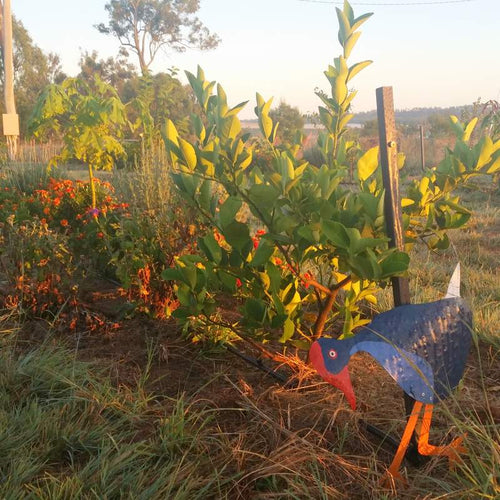Knowing when to plant seeds if you're between climate zones
When I started trying to plant seeds, I would look at the climate map and wonder exactly what zone we lived in. In the Lockyer Valley, just west of Brisbane, we were either sub-tropical or temperate. The only problem was that these have almost exactly opposite planting times! And now in Nanango, we are still in an ambiguous area of the map, on the each of these two zones.

The biggest problem I have is frosts in winter. Originally, my techniques for protecting the garden from frost were limited to putting old net curtains over venerable plants, such as silverbeet, so that dew wouldn’t form on them, this seems to work, but I only have a limited supply of netting and it is labour intensive! However, one frosty morning, I noticed that we didn’t have any frost around the water tanks. This is because the large volume of water in the tank stays warmer overnight compared to the air temperature and provides a little pocket of warmer air to protect the surrounding grass from frost. This made me think of replicating the effect on a smaller scale in the garden by putting buckets of water around the garden to protect silverbeet and seedlings. We’re also lucky that the garden itself is close to the tanks, so probably has a little protection from cold air.

We do have a very hot and humid summer in Nanango, but the winters can get very cold due to our proximity to the Bunya Mountains. We can get frosts, but even this depends on exactly where you are, as properties on the top of hills generally don’t suffer as badly as those in the valleys (and this is a hilly area).
Fortunately, at the local farmers markets I had a chat to a local lady was selling seeds about when to plant. It turned out that she lived just up the road from us and could give us some good local advice. She said to follow the subtropical guide through summer, but as soon the weather gets colder, you need to be prepared to switch to the temperate guide. I had never thought of using both zones in that way!
This is a technique that was used by Bolivians for centuries to raise the local temperature and boost their productivity (more here). It seems that you just have to work out over time which plants will grow well in your garden, in your micro-climate, in your soil, especially when a neighbour just up the hill may have a completely difference climate and geology to your own. For example, I found out the hard way that peas will not grow here in the summer, its just too hot, but they didn’t do well in winter either (too cold!), they seemed to thrive in spring, when the temperature and sunlight hours in my garden were just right. I don’t think that follows any planting guide! So it looks like I will just have to figure it out for myself.
I've written heaps more about frost here.
What's your climate like? Does it show up on the climate map?
I've written heaps more about frost here.
What's your climate like? Does it show up on the climate map?























Leave a comment